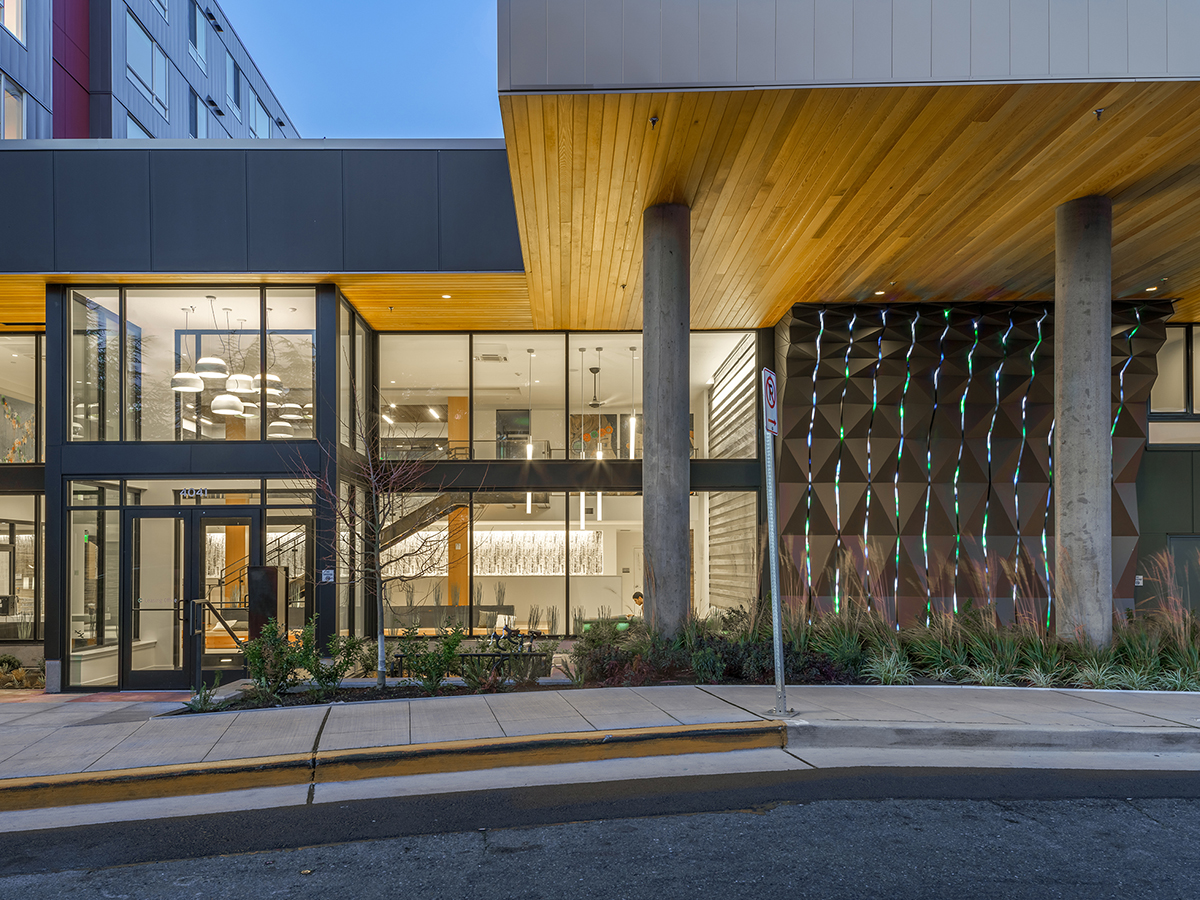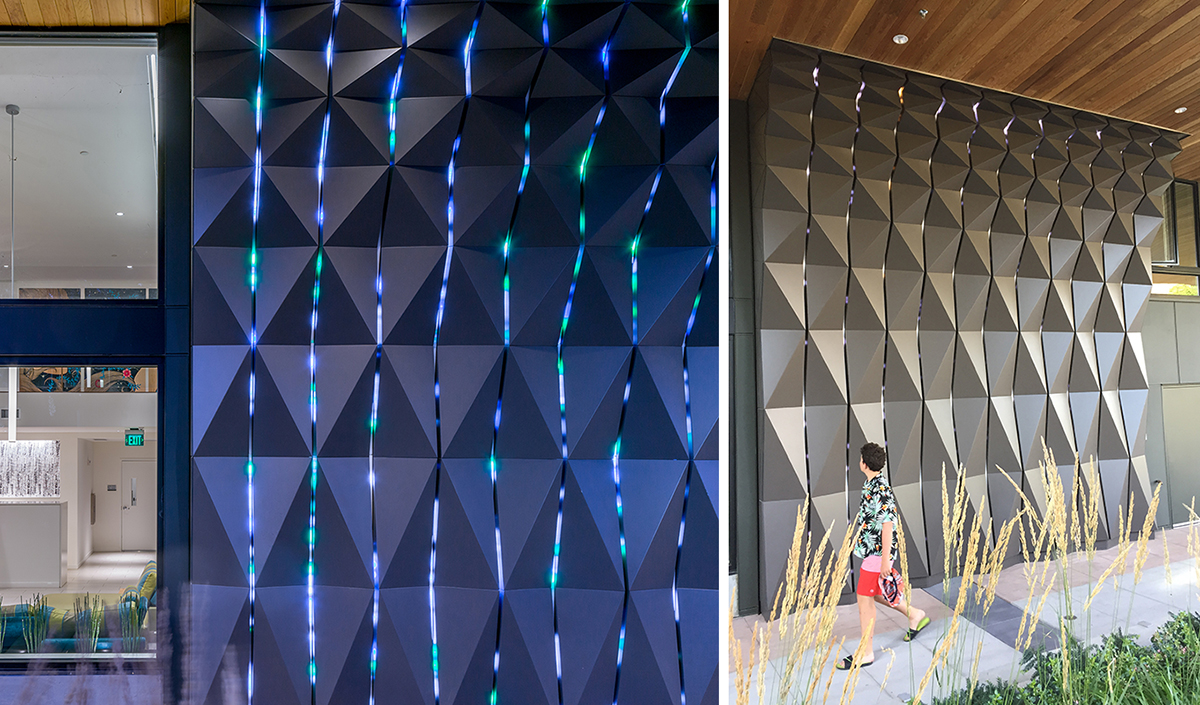Blog
Augusta PB1969
Origin Story: Bringing a Digital Legacy to Life in Material Form

The installation pays homage to the site’s history: where Paul Allen and Bill Gates debugged computers together as teens.
Located in Seattle’s University District, the Augusta PB1969 at the Augusta Apartments sits on storied and world-changing history. The home to mostly young professionals and recent college graduates occupies the site of what was the Computer Center Corporation (CCC), where Microsoft founders Bill Gates and Paul Allen famously worked together as teenagers debugging a mainframe computer in the late 1960’s.
Brought in by Vulcan Real Estate (also founded by Paul Allen), the building’s developer, we were tasked with designing a durable placemaking installation for the building’s main entrance that provided a window into the site’s significance — a friendship and business partnership that changed the world.
How do we bring Bill and Paul’s ideas and digital work to life through an abstract rather than literal physical interpretation? This is what we set out to answer.
 Interlocking polycarbonate panels form a tessellation or tiling pattern. In programming, tessellation is the translation of code to digital 3D shapes.
Interlocking polycarbonate panels form a tessellation or tiling pattern. In programming, tessellation is the translation of code to digital 3D shapes.
First, we explored early programming* methods, including decision-tree modeling (the if-then logic that forms the foundation of computer programming) and algorithms found in nature. We also played around with how to translate such ideas, computer code for example, to physical form in a compelling and unexpected way.
In programming, tessellation is the translation of computer code to digital 3D faceted forms. We took this visualization of computer code one step further — to physical form — with a tessellated wall of interlocking geometric panels.
We landed on the concept of tessellation, or tiling, a pattern of repeating geometric shapes with no gaps or overlap. (The artist M.C. Escher used the technique in his popular work.) In the context of programming, tessellation aptly represents the translation of computer code to digital 3D faceted forms used in digital drawings and animation. We took this visualization of computer code one step further — to physical form — with a tessellated wall of interlocking geometric panels.
Inspired by the light panels of the Digital Equipment Corporation’s PDP-10 mainframe computer, the model that Paul and Bill worked on at the CCC, we designed a network of LED lights that runs through the recessed space between the panels. The lighting design also represents the decision-tree branching that is key to programming.
 The size of the individual panels decreases going up the wall, creating an illusion of arching. Motion sensors trigger a change in the recessed lighting as someone walks by, making the installation interactive.
The size of the individual panels decreases going up the wall, creating an illusion of arching. Motion sensors trigger a change in the recessed lighting as someone walks by, making the installation interactive.
We worked closely with a local fabrication company, Dillion Works, Inc., to construct and install the polycarbonate wall to ensure durability and the right balance of scale. The sculptural design integrates seamlessly into the building, as if it’s always been there, and creates an implied canopy. The size of each interlocking shape decreases as you move up the wall, giving the form a subtle arching, organic effect.
Custom, interchangeable lighting sequences are swapped in and out for game days, holidays, or simply for a change. Through motion detectors, the presence of passersby triggers a new lighting sequence: At rest, small dots float in the gaps between the tessellated columns. When activated, the lights form strong lines that move in different patterns and change colors. Thanks to its busy location, there are plenty of opportunities for pedestrian interaction.
For Vulcan, the installation reflects a unique and thoughtful expression of its brand and honors the many contributions of its visionary founder.
*In honor of its location’s backstory, the building is named for Ada Augusta Lovelace, a 19th-century countess considered to be the first computer programmer.
Published on 28 July 2020